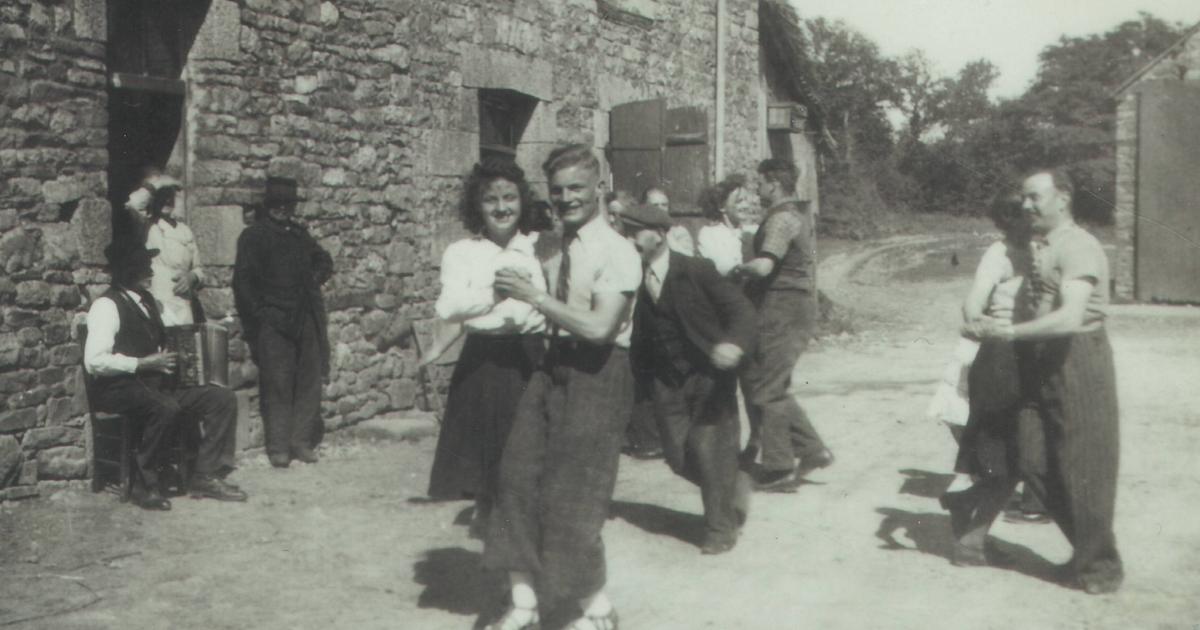A heavy cell door, peeling dirty yellow paint, hangs in the dark.
It comes from the prison of Fresnes, donated by an association to the National Resistance Museum of Champigny-sur-Marne.
A man's voice reads the last letter from a shadow fighter, written a few hours before his execution, one morning in April 1941 in the courtyard of the establishment.
Along the proposed route, the major stages of the dark hours of the Occupation follow one another in an educational and dynamic museography.
Further on, another atmosphere: we hear the blare of an accordion and we enter a setting that evokes the last carefree hours of the guinguettes that are scattered along the banks of the Marne.
Until Sunday April 2, the Musée de la Résistance is hosting the exhibition
You won't go dancing anymore!
Clandestine Balls 1939-1945
which focuses on a little-known aspect of the Occupation period.
Because for four years, despite the restrictions and the dramas, the French will continue to dance in a clandestine way.
Read alsoThe Resistance celebrated at the Invalides
At the end of the Great War, with the Roaring Twenties, France was seized by a veritable "
dansomania
".
A mass leisure activity, going to balls is the favorite pastime of millions of French people.
During the strikes of 1936, people danced to the sound of the accordion in the courtyards of occupied factories.
But the declaration of war will turn everything upside down.
On May 24, 1940, Georges Mandel, the Minister of the Interior of the Reynaud government, prohibited the holding of balls and the closing of dance halls.
From the Armistice, Marshal Pétain maintained restraint and denounced “
the spirit of enjoyment which prevailed over the spirit of sacrifice
”.
After the astonishment of the defeat, life takes over however and clandestine balls are organized in the cities and the countryside.
You're not going to dance anymore!
,
a traveling exhibition created on the initiative of the Center for Social History of Contemporary Worlds (Paris 1 Panthéon-Sorbonne-CNRS), evokes this France which continued to dance during the war.
While some are dying, languishing in prison, hiding or fighting, the vast majority of French people have other, sometimes more frivolous concerns.
In barns, clearings, hotels, railway tunnels, gymnasiums or garages, young and old meet to binge to the sound of the accordion.
In the countryside, the gendarmes, in the name of the new moral order, lead the hunt with more or less zeal.
The interventions take place randomly on the patrols, guided by hooting or intrigued by the presence of young people in their Sunday best who are converging in the same direction.
The operations are also based on letters of denunciation which arrive in the prefecture.
The sanction is generally a fine, seizure of instruments, administrative closure,
sometimes even prison for the organizers.
In town, to get around the ban, dance classes are full.
In the beautiful districts, the youth organizes surprise parties which last, curfew obliges until the early morning.
Throughout the Occupation, the authorities will try in vain to repress the furious desire to dance of the French.
France let off steam
In 1944, even the collaborationist press no longer believed in it.
A few months before the Liberation, Le Mérinos, a satirical periodical with pro-German sympathies, made its front page on the subject.
A full-page drawing depicts a police raid on a car garage where a huge clandestine ball is taking place.
The pandores seem overwhelmed by their mission: to apprehend dangerous individuals, affected by the dance of Saint-Guy.
Among the couples, we recognize some beautiful zazous specimens, males and females, the index raised in the air, which seem to have fun.
The Germans routed, the French let off steam.
To the tune of
La Java bleue,
we dance to
Les p'tits Garçons du maquis
.
Among the visitors, Jean Burlet, an old resident of Champigny evokes the memory of his father, a railroad worker and resistance fighter.
He worn down the soles of his shoes after dancing all night in the liberated city.
However, while the country is counting its dead, the new authorities, from the ranks of the Resistance, do not look favorably on these popular festivities while the country is counting the dead and missing.
The authorization of the balls will not be restored until April 1945.
On Saturday April 1, to end this exhibition in style, the stars of the variety of the time, Edith Piaf, Lina Margy, Charles Trenet or Tino Rossi are summoned during of a sung conference "
Song is also material for dancing
proposed by Jean-Paul Le Maguet, honorary heritage curator and Raphaël Chotard, historian and accordionist-singer.
On the menu, the tradition of the sung refrain that will continue during clandestine balls.
The next day, Sunday, the screening of Marcel Carné's first film, a documentary short, Nogent, Eldorado du dimanche (1929), will be followed by a conference by Vincent Villette, director of the Intercommunal Museum of Nogent-sur-Marne, which will evoke the importance of the guinguettes on the banks of the Marne in the interwar period.
National Resistance Museum, 40, quai Victor-Hugo, 94500 Champigny-sur-Marne.
reservation@musee-resistance.com, or Information on 01 49 83 90 90.















